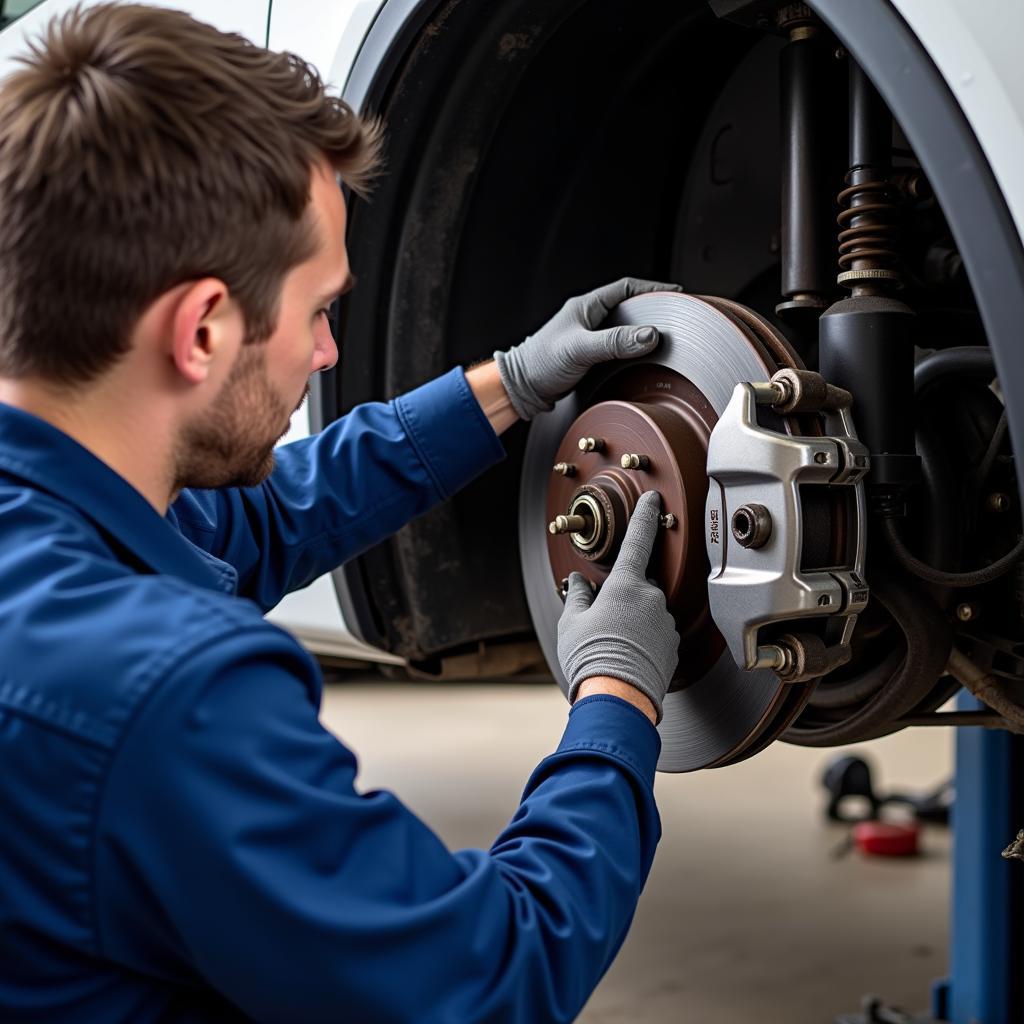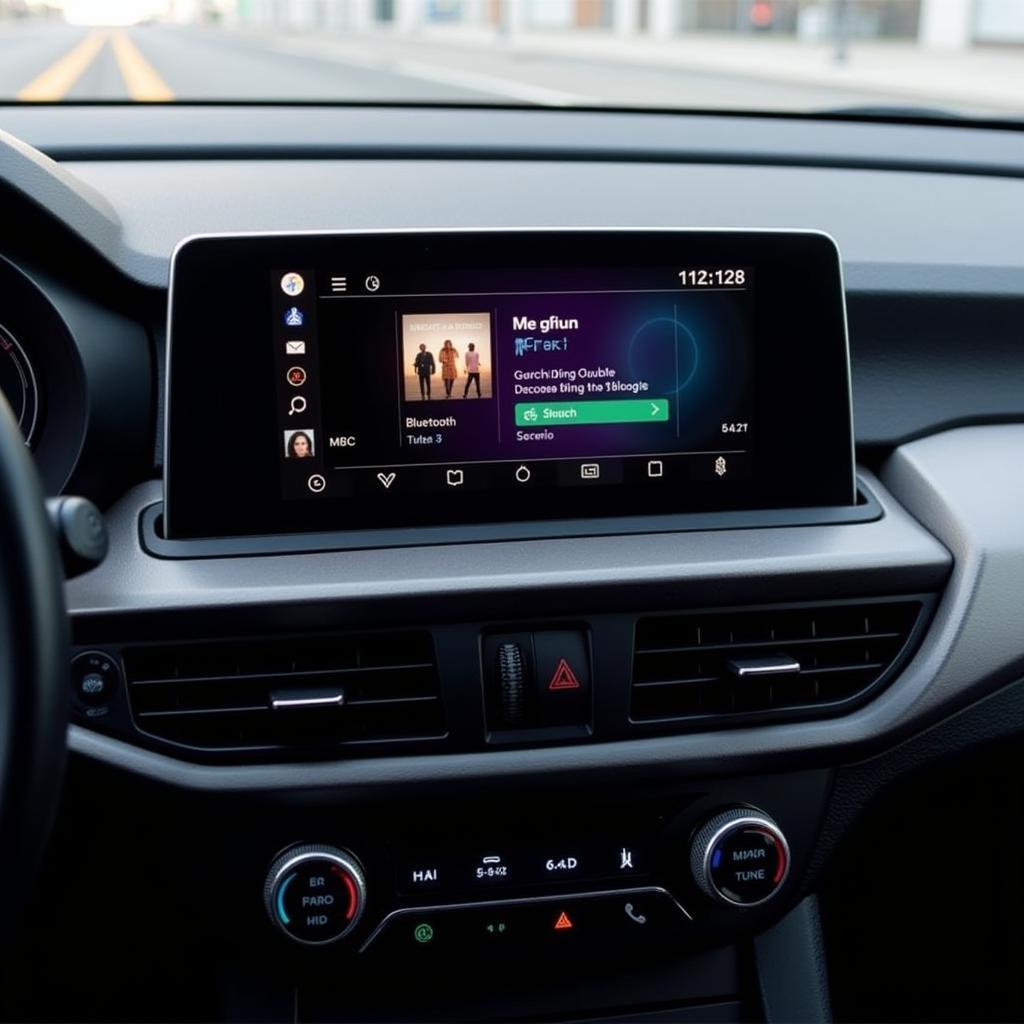The dreaded brake disc warning light, often illuminated as a menacing exclamation mark within a circle, can send chills down any driver’s spine. This light, a key component of your car’s braking system, signals a potential issue that shouldn’t be ignored. Understanding what triggers this warning and how to address it can ensure your safety and keep your vehicle running smoothly.
Decoding the Brake Disc Warning Light
The brake disc warning light can be triggered by several factors, some more serious than others. Here’s a breakdown of common culprits:
- Worn Brake Pads: This is the most common reason for the warning light to illuminate. Brake pads have wear indicators, and as they wear down, these indicators contact the brake disc, triggering the warning light.
- Low Brake Fluid: Your car’s braking system relies on hydraulic pressure created by brake fluid. If the fluid level drops too low, often due to a leak, the warning light will activate.
- Faulty Brake Disc Sensor: While less common, a malfunctioning sensor can also be the culprit. Sensors are responsible for detecting brake pad wear and can sometimes provide false readings if damaged.
- Issues with the ABS System: Modern cars are equipped with Anti-lock Braking Systems (ABS), and a fault within this system can also trigger the warning light.
Diagnosing the Problem
Ignoring a brake disc warning light can lead to costly repairs and compromise your safety. Here are some steps to diagnose the issue:
- Check Your Brake Fluid: Locate the brake fluid reservoir under the hood of your car. If the fluid level is below the minimum mark, there’s likely a leak that needs immediate attention.
- Inspect Your Brake Pads: If possible, visually examine your brake pads through the spaces between the wheel spokes. Look for significant wear or thinness.
- Listen for Unusual Noises: Grinding or squealing sounds when applying the brakes can indicate worn brake pads and require immediate attention.
- Feel for Braking Issues: Does your car pull to one side when braking? Does the brake pedal feel spongy or unresponsive? These sensations can indicate a problem within the braking system.
When to Seek Professional Help
While checking your brake fluid and visually inspecting your brake pads are good starting points, it’s crucial to remember that diagnosing and repairing brake systems require specialized knowledge and tools. If you’re unsure about any aspect of brake repair, it’s always best to err on the side of caution and seek help from a qualified mechanic.
land rover discovery 4 brake pad warning light reset
Remote Diagnostics and Software Solutions
Advancements in automotive technology have paved the way for remote diagnostics and software solutions for certain brake-related issues. Some vehicles allow mechanics to remotely access the car’s computer system, diagnose the problem, and even perform software updates or resets.
For instance, if the brake disc warning light is triggered due to a faulty sensor or a minor software glitch, a remote software update might be all that’s needed to rectify the issue.
discovery 4 brake pad warning light
However, it’s crucial to remember that not all brake problems can be solved remotely. Physical damage to components like brake pads, discs, or calipers will still require hands-on repair.
Brake Maintenance Tips
Preventing brake problems is always preferable to dealing with them after they arise. Here are some maintenance tips to keep your braking system in optimal condition:
- Regular Inspections: Have your brakes inspected by a qualified mechanic at least once a year or every 12,000 miles, whichever comes first.
- Timely Brake Pad Replacement: Don’t wait for the brake disc warning light to illuminate before replacing your brake pads. Consult your car’s owner’s manual for recommended replacement intervals.
- Quality Brake Parts: When replacing brake components, always opt for high-quality parts from reputable manufacturers to ensure optimal performance and longevity.
- Brake Fluid Flush: Brake fluid should be flushed and replaced according to your car manufacturer’s recommendations, typically every 2-3 years.
 Car Brake Maintenance
Car Brake Maintenance
Conclusion
The brake disc warning light is a crucial safety feature in your car. Understanding its implications and taking prompt action can save you from potentially dangerous situations and costly repairs. While remote diagnostics and software solutions offer convenient solutions for certain issues, it’s essential to remember that professional mechanical expertise is crucial for maintaining a safe and reliable braking system.

